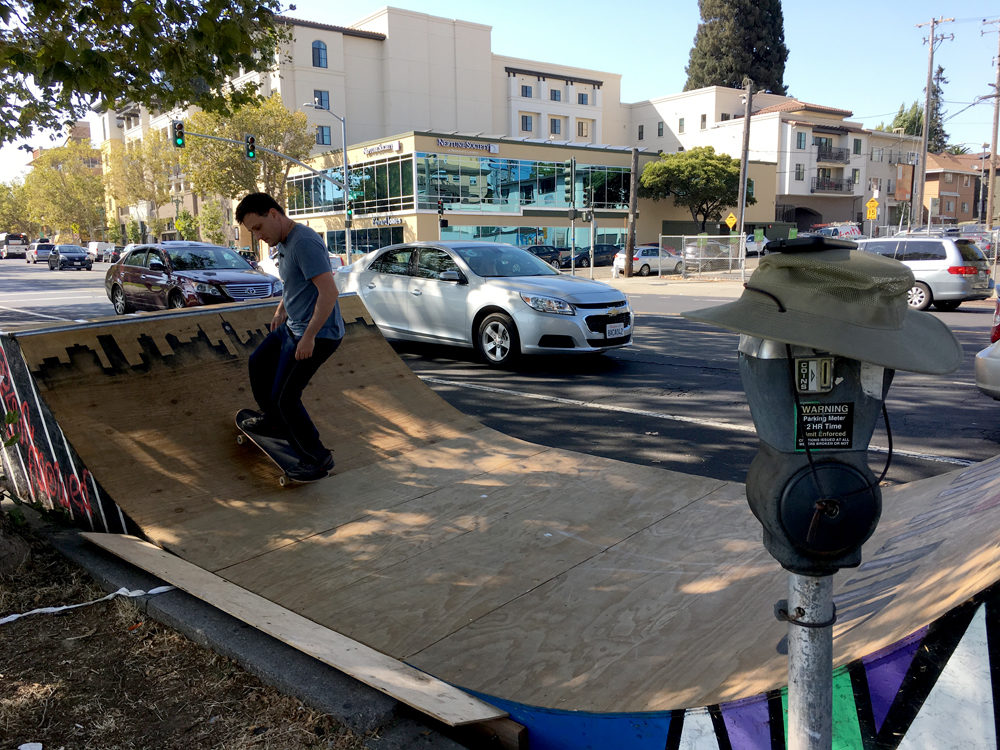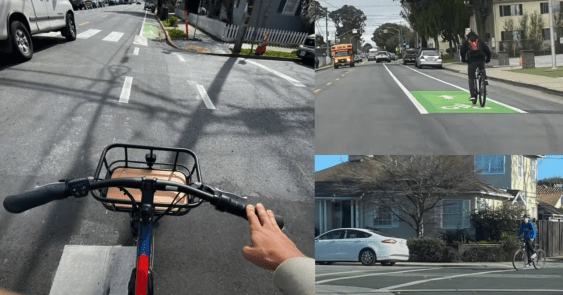San Diego will soon become the latest California city to host Waymo’s fully driverless, all-electric ride-hailing service. The Alphabet-owned company announced plans to begin mapping city streets and launching limited operations sometime next year — but whether that move will help advance San Diego’s safety and climate goals remains to be seen.
Waymo’s expansion comes as local advocates are calling for urgent action on the city’s Vision Zero pledge. Just yesterday, Streetsblog California reported on Circulate San Diego’s new campaign, “Stop Deaths on Our Streets,” which is urging Mayor Todd Gloria and the City Council to fund infrastructure that prevents traffic fatalities. The campaign highlights the city’s growing crisis: despite official commitments to eliminate traffic deaths, car collisions killing/injuring pedestrians and cyclists continue to rise.
In that context, Waymo’s arrival offers an interesting — but complicated — development. The company’s vehicles are fully electric and Waymo has claimed that the software is designed to follow traffic laws precisely and avoid the kinds of human mistakes that cause most serious crashes. This puts Waymo ahead of Elon Musk's Tesla AI, which openly brags about settings that allow riders to speed in their automated vehicles.
Proponents argue that autonomous fleets could reduce collisions, cut emissions, and fill mobility gaps for those without access to reliable transit.
Studies back up this argument, although the studies rely on data provided by Waymo. In 2023, Waymo used its own data to argue their cars are safer than those driven by human drivers. In 2024, a Swiss insurance company released its own study that showed that the robo-taxis react more quickly to changes than those driven by humans.
Of course, Waymos have been on the streets of several California and other American cities. The company has logged tens of millions of autonomous miles across San Francisco, Los Angeles/Santa Monica, Phoenix, and Austin. Just yesterday, the company announced it had passed an "independent safety audit" for its operations in California.
Still, its operations have drawn criticism in San Francisco, where emergency responders have complained about stalled vehicles blocking streets, a Waymo didn't stop when approaching a school bus picking up passengers, and in Santa Monica residents have complained about the all-hours noises and Waymo's parking overnight on public streets. Recently, a Waymo hit and killed a cat spurring new calls for reform in how Waymo's operate around smaller animals
But the introduction of driverless cars doesn’t automatically translate to safer or more equitable streets. San Diego’s real transportation challenges are rooted in infrastructure — wide, fast arterials without protected bike lanes, incomplete sidewalks, and inconsistent enforcement of traffic safety laws. Technology can’t fix that on its own.
As for impact on the environment, that's also a tricky question. It's true that automated electric vehicles are going to produce fewer emissions per mile traveled than a traditional car, but if per-trip emissions are low for electric robo-taxis, they're higher than electric car trips - a large chunk of climate emissions come from manufacturing the car itself - and building/maintaining the infrastructure to operate it.
Studies have also shown that roughly half of trips in ride-hail systems replace a trip that would have been more sustainable, i.e. walking, bicycling, etc, if the service didn't exist.
City officials, for their part, have welcomed Waymo’s planned rollout, describing it as an “innovative and promising” step toward making local transportation “more accessible, more sustainable, and more connected.” But it’s unclear how — or if — the city plans to integrate autonomous vehicles into its broader mobility strategy. Without policies that prioritize walking, biking, and transit, the risk is that robotaxis will simply replace one kind of car trip with another.






